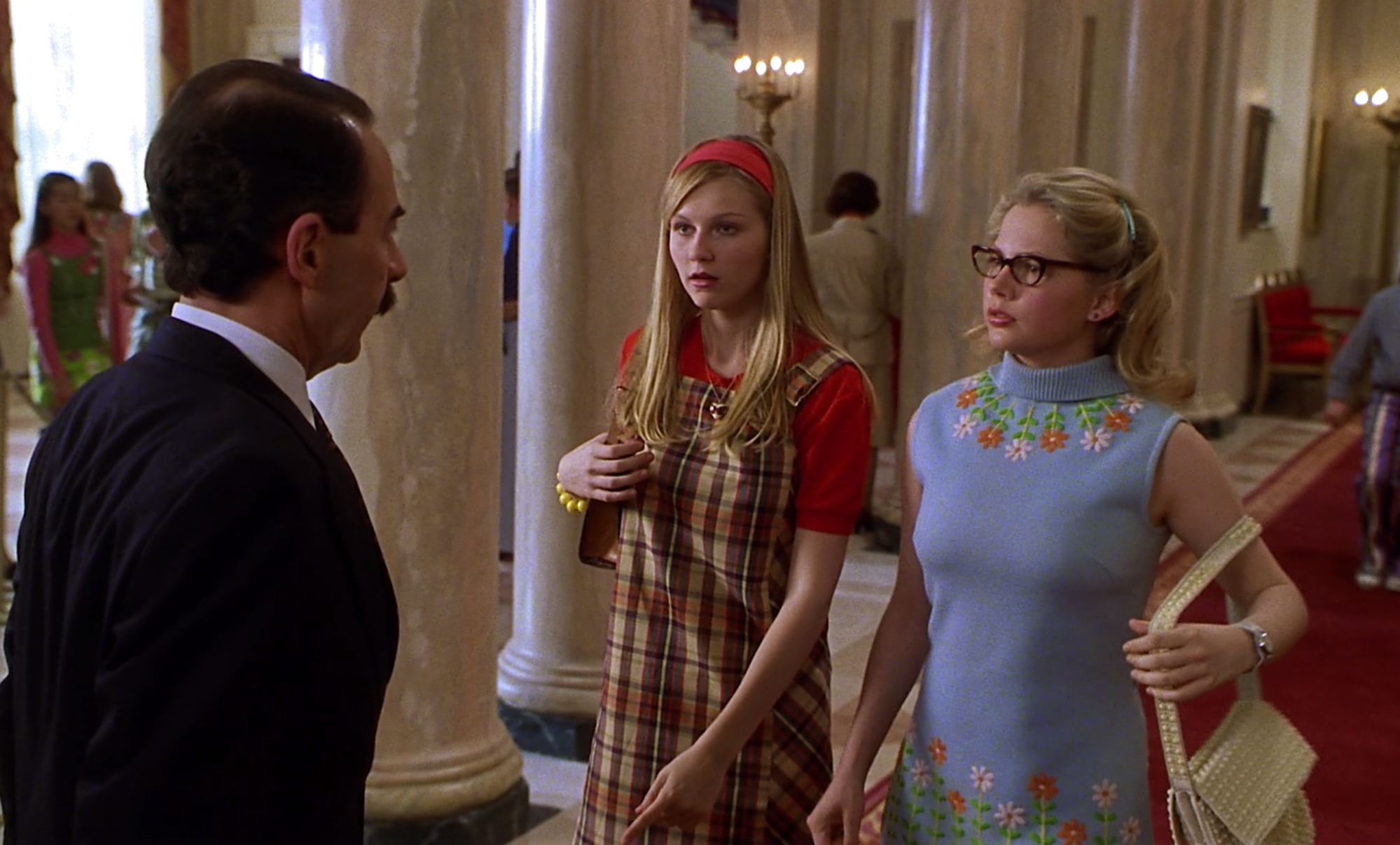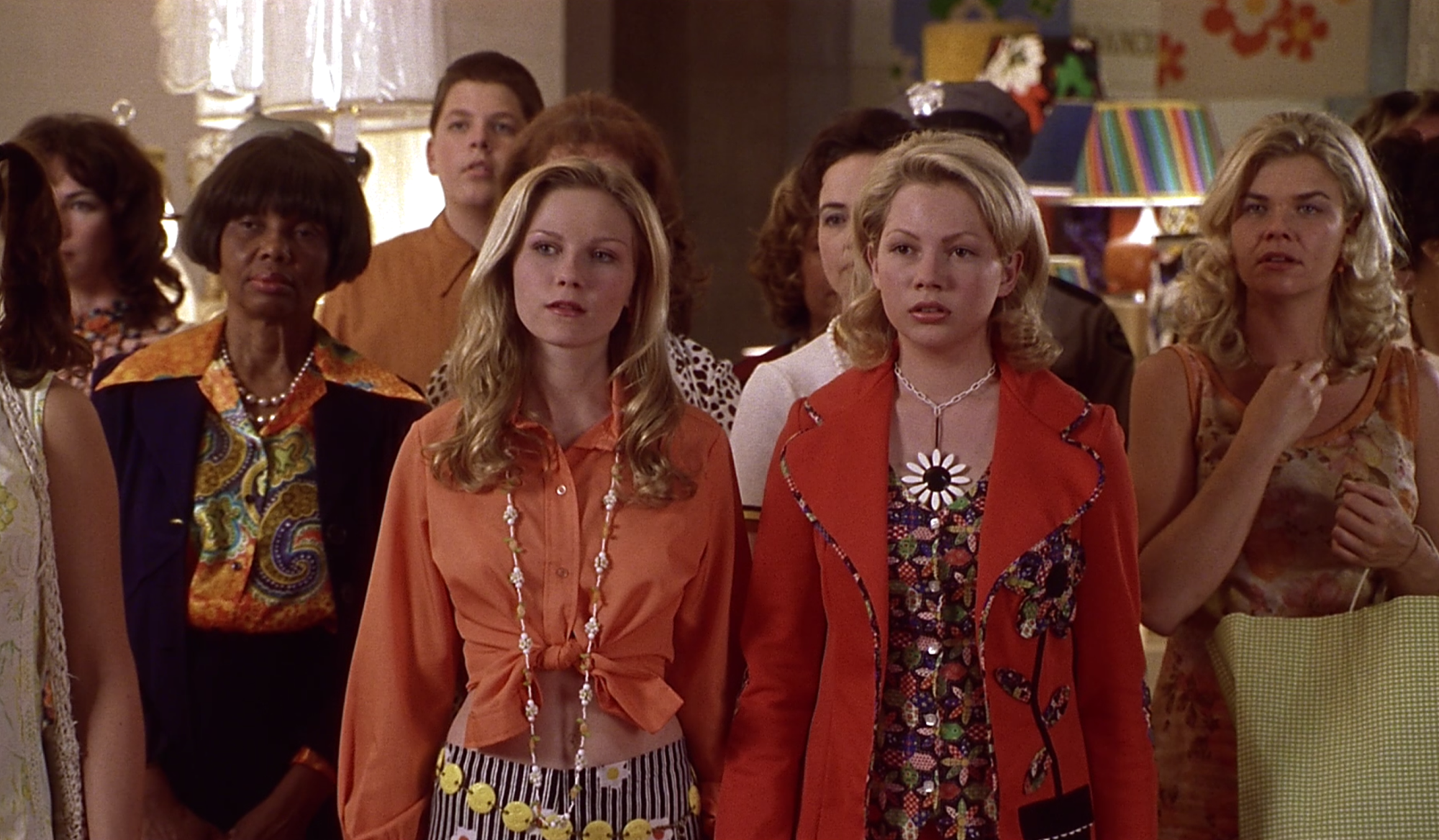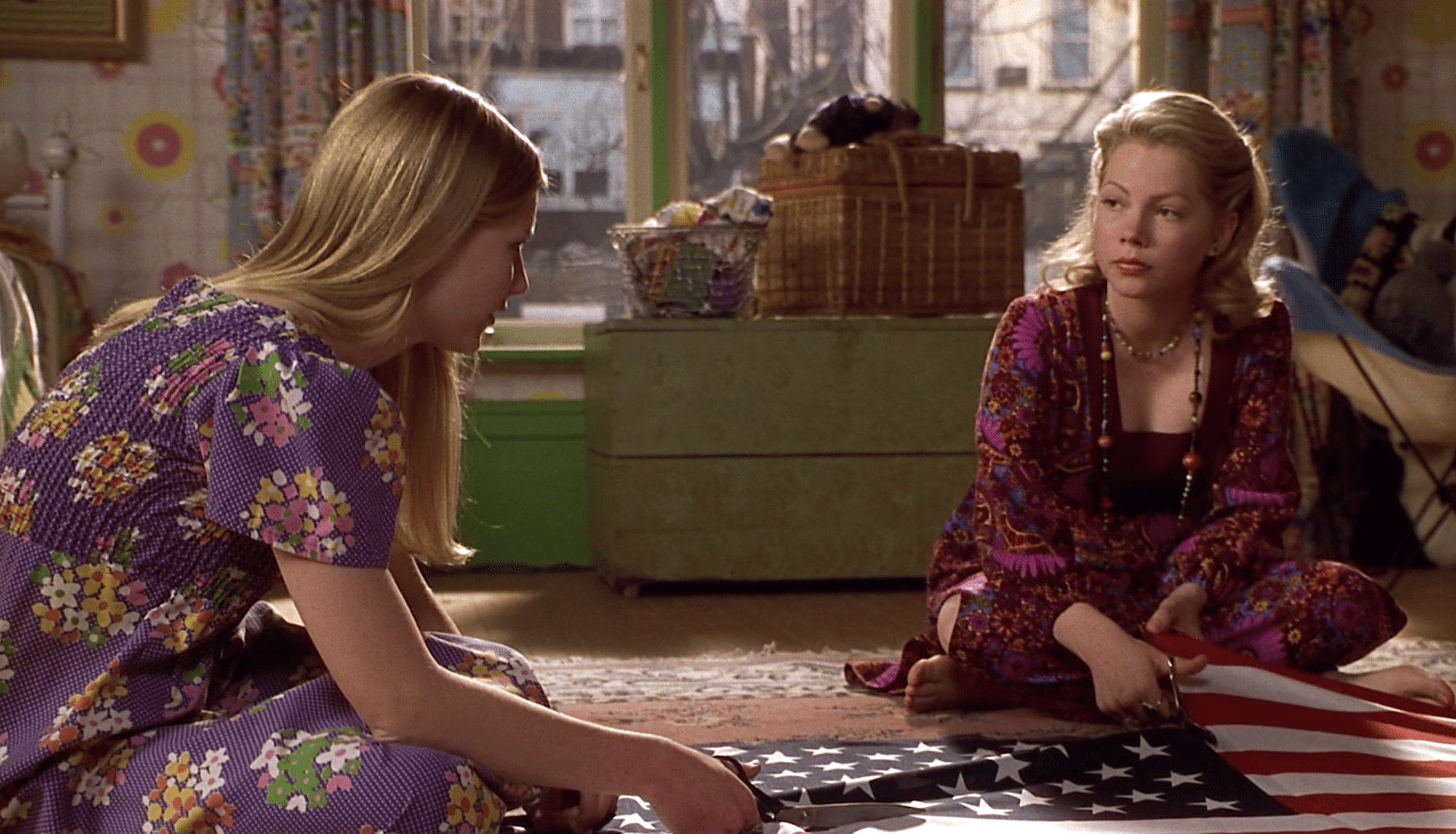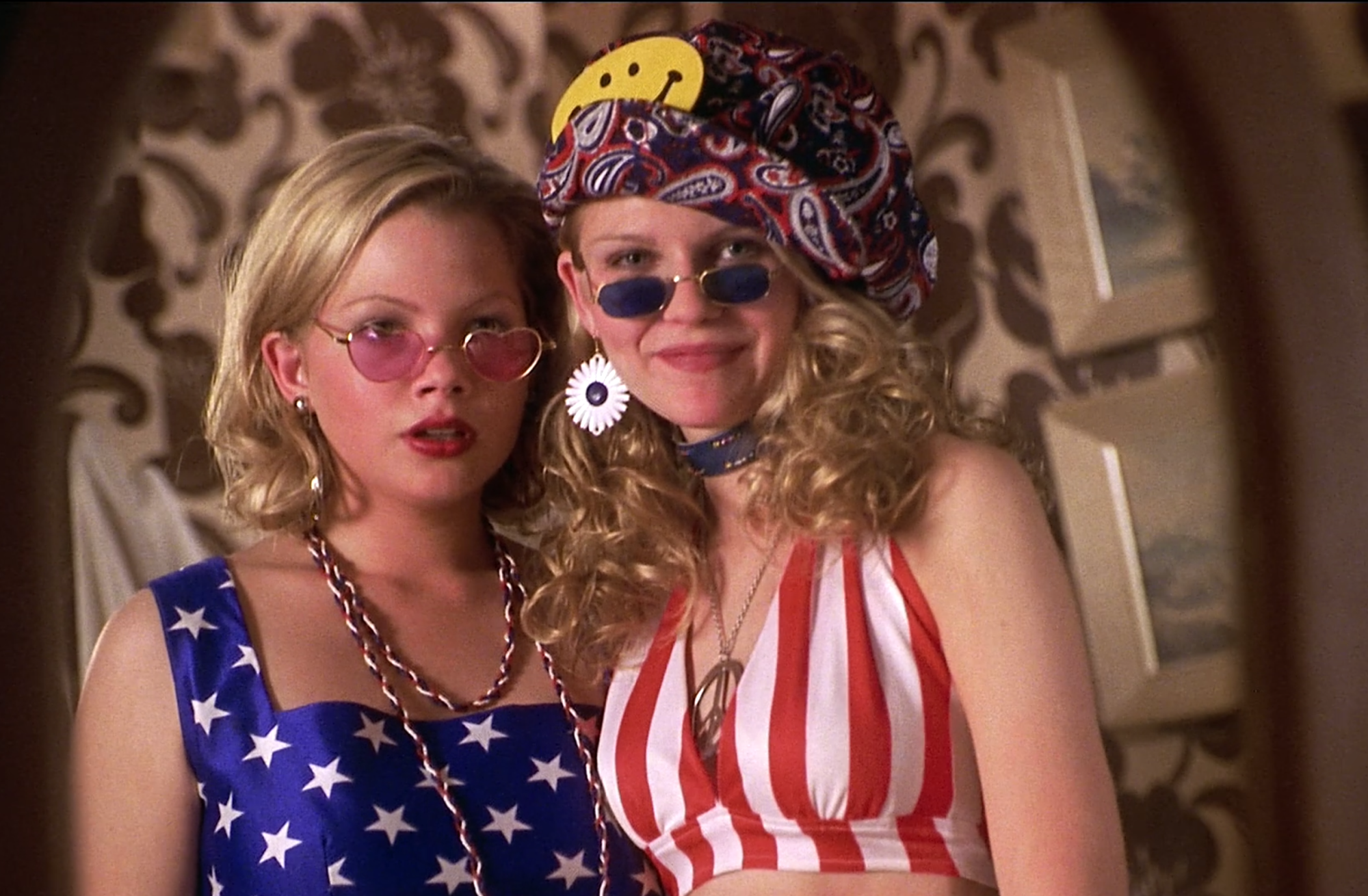When Dick came out 20 years ago on August 4, 1999, it was in the midst of the era’s great teen movie rush, with films like She’s All That, 10 Things I Hate About You, Drive Me Crazy, and Never Been Kissed, hitting theaters the same year. However, Dick stood out because of its unique premise. The film, which starred Kirsten Dunst and Michelle Williams as 15-year-old best friends Betsy and Arlene, took place in the early 1970s during the Watergate scandal. Dunst’s role in Dick would help cement her status as a darling of this teen-oriented era, as she’d go on to star in The Virgin Suicides and Bring it On, while Williams, fresh from her newfound Dawson’s Creek fame, would take the opposite route with dramas like If These Walls Could Talk 2 and Me Without You.
The movie starts off with the girls, who live in the Watergate complex, mailing a love letter to their idol Bobby Sherman, which inadvertently gets the Watergate burglars caught. After visiting the White House on a school field trip, the girls are asked to be President Nixon’s official dog walkers for his dog Checkers, and later, his “secret youth advisors.” A series of comical circumstances occur, such as Betsy and Arlene persuading the president to end the Vietnam War, and unknowingly get him and the White House staff (and in one scene, Leonid Brezhnev) high with weed cookies, before they end up discovering Nixon’s shadiness.

Dick ultimately rewrites Nixon’s time at the White House and the Watergate drama to hilariously suggest that the secret informant known as “Deep Throat” was actually two teenage girls. It also takes you back to a different time of presidential scandal, which seems mild compared to what we’re dealing with now. There are countless “Dick” jokes, and familiar faces such as Will Ferrell playing Washington Post reporter Bob Woodward and one very young, awkward, and extremely pre- Deadpool Ryan Reynolds. Despite critical acclaim, Dick didn’t reach box office success but has since become a cult favorite due to its amusing political satire, the charms of Dunst and Williams, and the many 70s-inspired ensembles that serve as eye candy throughout the film.
Deborah Everton, the film’s costume designer, had already worked with the director Andrew Fleming several times before, including on 1996’s The Craft. “His mandate was, ‘Let no cliche go unexploited,’ which I just took and ran with.” Everton says Fleming tends to write almost every scene as a new day, so it was necessary to have a a large amount of costumes to tap from. Not to mention she was tasked with outfitting hundreds of extras. But as luck would have it, Everton found most of the clothing at a warehouse that housed genuine vintage pieces. “There was a place in St. Louis called Hullabaloo, and it was like a whole city block of deadstock clothing,” she says. “It was like walking into a time machine. We got all this great stuff—actual clothes from the late 60s, early 70s—to put on extras or to use as patterns. Hullaballoo, which supplied the looks for a variety of movies over the years such as the original John Waters Hairspray, Boogie Nights, and Catch Me if You Can, appears to have closed down, but one of the original founders still does wholesale in St. Louis under the name Donnaland Vintage Variety.

As for the costumes for Betsy and Arlene, Everton says theirs were mostly custom-made, but you wouldn’t be able to tell. The outfits they wear during their White House adventures look incredibly authentic, from the striped bell-bottoms to the structured peacoats, to the collared, pastel drop-waist dresses. Which are all accessorized with floppy, patchwork hats, knee high socks, oversized, chunky necklaces, and daisy chokers. For a vintage lover, every single one of the girls’ outfits could be a source of summer style inspiration.
Out of all their entire on-screen wardrobe, Betsy and Arlene’s most memorable look has to be the ones shown on the movie poster. At the end of the film, the girls cut up an American flag to construct a pair of red, white, and blue bell-bottoms, super-short shorts, and a couple of crop tops. It is, arguably, one of the most important fashion moments in movie history.
“It was in the script that they were, you know, cutting the flag and sewing it,” Everton says. “But the thing was, it’s illegal to cut one up.” Everton says that when they were shooting the scene and the girls began cutting up the flag, everyone paused. “We all kind of stood there looking at it, and then said, ‘well, we’re in Canada!’” she laughs. (The film was shot in Toronto.) “And that’s pretty much how every day was on that movie. I mean, it was laugh out loud, hysterical, every day on that film.”

Aside from the fashion and the comical moments in the film, there’s something really inspiring about the two teens. Like in one scene where Betsy says, “We are stupid teenage girls” and Arlene corrects her and says, “We’re human beings, and we’re American citizens.” And then shortly after, the two bring down the corrupt Nixon, bidding him goodbye via a handmade “You suck, Dick!” sign. It’s a victorious moment that you can’t help but cheer for, because, even in a film that takes place in an era long gone, it’s a nice reminder that maybe someday, teenage girls will really be the ones to save the world.
